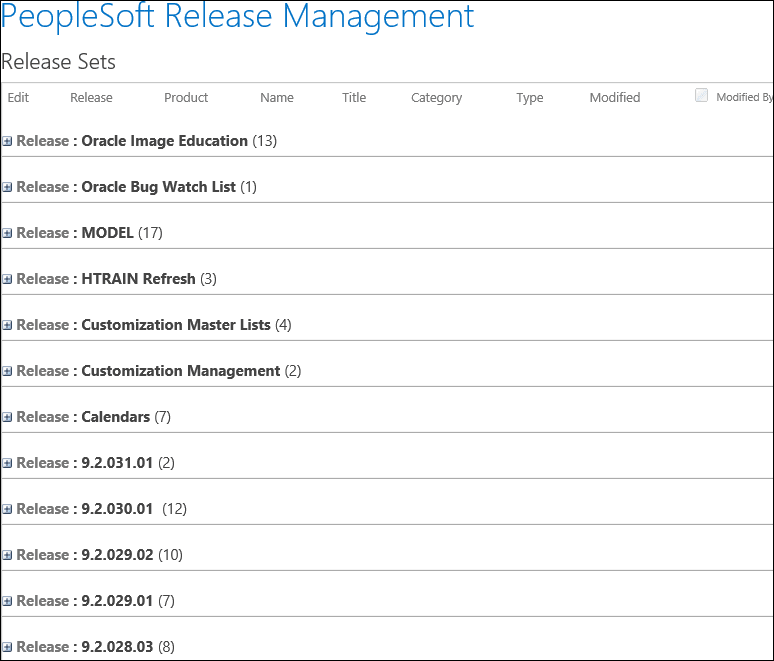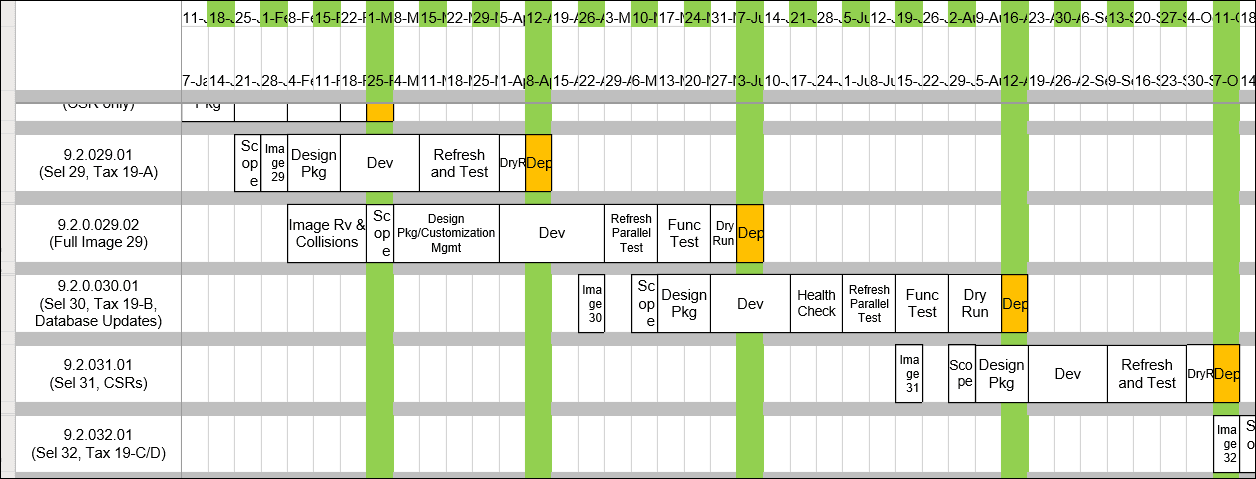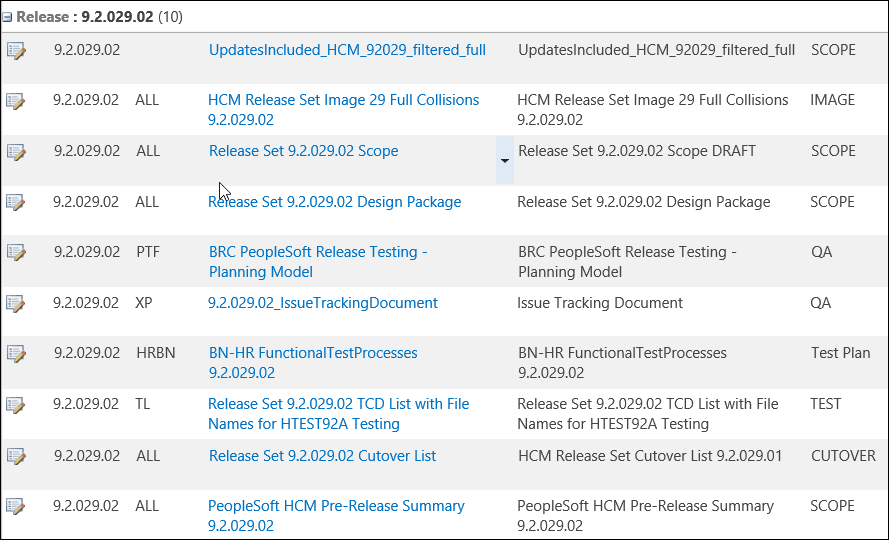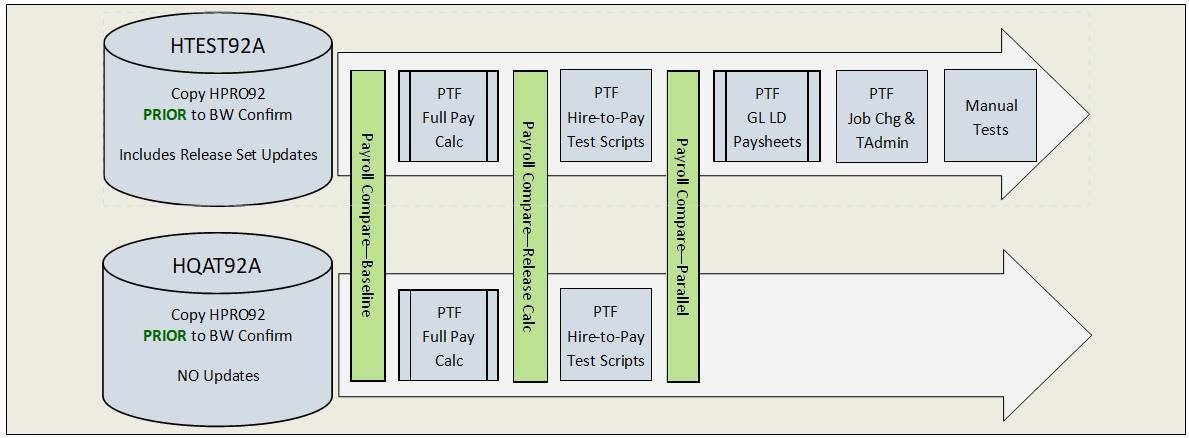King County, Washington
King County, Washington, implemented a Selective Adoption "Release Set strategy" that establishes a customization inventory
Summary
King County, Washington implemented a Selective Adoption ‘Release Set strategy’ that establishes a customization inventory, identifies the cost of customization maintenance, and reduces that cost by retiring low value customizations, using tools like Event Mapping, and prioritizing the rollout of delivered functionality like Fluid Company Directory, Employee Self Service, Manager Self Service, and Life Events; in addition to using Oracle Cloud Infrastructure for disaster recovery and business continuity.
Customer comments
- Partnering with Oracle to build out a PeopleSoft footprint on OCI.
- Implemented a customization management strategy—deprecating or transitioning customizations to event mapping.
- Implemented a continuous upgrade Release Set strategy since 2014 to stay current.
- Continuing to roll out newly delivered PeopleSoft features and functionality—Fluid.
- The PeopleSoft team at King County's - Business Resource Center continues to stay at the forefront of PeopleSoft modernization and is modeling the way for other regional PeopleSoft customers.
PeopleSoft footprint
We use PeopleSoft HCM, Oracle EBS Financial, OBIEE/OBIA and PBCS. For PeopleSoft HCM, our core modules include Payroll, Time & Labor, Benefits and Human Resources. We do use other delivered modules and have built our own.
Using OCI
We are using OCI to host a disaster recovery/business continuity (DR/BC) environment as a starting point. There is a strategic plan to move our development and other environments to OCI. Doing so will enable us to leverage PeopleSoft Cloud Manager (PCM) and realize the full potential of PCM Lifecycle Management features. One callout, King County was credited for improving OCI functionality of the DBaaS service.
The infrastructure of our DR/BC environment is currently built and undergoing a series of tests to validate our Oracle 18c DB upgrade, including conversion to Unicode. Our on-site production database is scheduled to be upgraded 8/16/2019 and from there it is go time—on to phase two. If curious, this infrastructure does leverage both Database and Load Balancer as a Service.
Part of our plan and strategy is to move development allocated environments to OCI next and have our test, QA and production environments follow.
Using event mapping
It didn’t take long for everyone on the PeopleSoft team to recognize that customizations are expensive and high-maintenance. It would be much easier to embrace newly delivered features if we could minimize code collisions. We’re now following a strategy to eliminate low-value customizations where possible.
The ultimate goal is to maximize value for King County business owners and employees
- Leverage Oracle delivered PeopleSoft features to increase return on investment.
- Eliminate low-value customizations to reduce cost of system maintenance.
- Identify customization value and determine cost.
Establish customization inventory
- Identify all customized objects to establish vendor customized objects library.
- Build functional customization repository with assigned customization ID. Align customized objects library items, test component/process, specifications, and PTF/manual test cases.
- Classify customization inventory items as custom bug fixes or strategic enhancements.
- Enable tracking value of customization, frequency of collisions, and assessment of converting customization to delivered solution.
Implement proactive customization inventory review and management procedures
- Confirm value of strategic enhancements with business owner.
- Identify no-or-low value customizations and flag for retirement.
- Identify customizations that may be replaceable with delivered solutions.
- Log new customization requests through Oracle’s Idea Page for evaluation.
Establish cost of customization maintenance
- Assess complexity of customization retrofits
- Track frequency of collisions on customized vendor objects
Lower cost of customization inventory
- Eliminate custom bug fixes – reconfirm that bugs persist and open SR for Oracle fix.
- Eliminate customizations rated no-and-low value.
- Eliminate customizations identified as replaceable with delivered solutions.
- Request valuable customizations as enhancement Ideas through MOS.
- Convert customizations on vendor objects to Related Content Event Mappings.
Example: forgot password functionality
As part of a de-customization exercise for Forgot Password functionality, Event Mapping enabled us to remove over 72% of the customizations made to delivered objects by migrating custom code into application packages for event mapping. This allowed us to leverage xUnit/Test Driven Design (TDD) methodologies to ensure integrity of the code base.
Release set strategy
King County’s Release Sets are planned out and scheduled a year in advance. We align PeopleSoft Image releases and in-house service requests to meet the business life cycle. This approach has allowed us to become more agile, with our service delivery and somewhat similar to a DevOps approach to delivering new Oracle provided features and in-house changes. Every release set follows a set cadence and provides full visibility to analysts, developers and business owners on the status and progress of updates.
We establish our annual outlook of release sets based on workload and the timing of Oracle’s delivery of Images with our business owners. Each release set follows the same cadence designed as a repeatable process, tracking with visual management and stand-up meetings. The leadership team – supervisors and manager – meet to determine scope, what’s in and what’s out, of each release as phase one of any release set. These items can come from a change package, bug fix, enhancement request and active projects queued up and prioritized by our business owners. These items will go through the entire lifecycle together. After scoping towards the end of the requirements phase, we do a design package review to promote communication about what items are going in together and create awareness for training, security, testing automation and resource dependencies.
Next in the development phase, customization management (formerly known as collision analysis) gives us the opportunity to go more “vanilla” and engage our business owners in customization value analysis. We utilize PeopleSoft Test Framework for a bulk of testing, including running a payroll and a hire to pay shell. As we begin the cutover dry run, which is a full dress rehearsal of the go-live event, we also meet with our business owners to review all changes scheduled for Production and provide a business summary and release notes in customer language, not techie speak! We do this rinse and repeat process six times a year to provide constant improvement and value to our user base.
Release set library

Release set delivery schedule

Release set management artifacts

Examples of features rolled out using release set strategy
King County has rolled out or utilized several new features within the applications, tools and administration focus areas.
Fluid applications
- Company directory
- Full navigation with customizable home pages and tiles
- Self Service Personal Details
- Self Service eBenefits
- Self Service ePay
- Manager Self Service My Team
- Life Events
- OnBoarding – Pilot
- Direct Deposit – Scheduled Oct 11
Tools
- Event Mapping
- Mobile/Fluid First mindset
- Classic Plus
- Automated Workflow Engine
- Data Migration Work Bench
- PeopleSoft Test Framework
Administration
- Automated Configuration Management
- Deployment Kit (DPK)
- Elasticsearch
Example: PeopleSoft Test Framework
King County put together an end-to-end PeopleSoft Test Framework suite of scripts to automate testing for our major Hire-to-Pay processes. The scripts are designed to be repeatable and autonomous. They gather the most current test case information through up-front queries, so we never have to update them before testing begins.
Our PTF testing suite covers the majority of our core processes
- Position requests and approval
- New Hire processing
- Benefits event processing and enrollment
- T&L reporting, time administration, approvals, and load to paysheets
- Payroll calculation and parallel comparison reports
- Payroll confirm, accruals, GL, and Labor Distribution
- Pay period reports and report distribution
End-to-end parallel testing flow
We run these end to end scripts in two testing environments. One contains PUM updates and the other is a copy without PUM updates. Once the tests are complete in both environments, we compare payroll results to identify any differences in gross, earnings, deductions, and taxes. This is a huge time saver for the QA team. With PTF we can verify within hours that information flows successfully through HR, Benefits, T&L, and into Payroll. Gone are the days of painful payroll parallel testing and tedious T&L rules validations! Our PTF tests run from end to end before our QA team begins manual testing, identifying any major issues on day one of the testing cycle.

Continuous upgrade model
The current continuous model, with more frequent updates and innovation delivery, supports our vision to deliver strategic value to our customers on a regular and frequent basis instead of consuming all our resources (time, money, staff) with big bang upgrades that were high cost and hard to quantify the business value, other than staying current to meet regulatory requirements. We are delighted with the new approach, enabling us to engage and partner with our customers on optimizing business value and the art of the possible. It was a breath of fresh air and something we jumped on early.
The transformation from big-bang upgrades to frequent, incremental change was initially a huge hurdle for the Business Resource Center’s PeopleSoft team. Prior to Selective Adoption, many of our functional support analysts were unfamiliar with our own customizations. Customizations were managed by big vendor-led project teams, and the knowledge didn’t always transition effectively to the permanent team. We’ve come a long way since starting Selective Adoption in 2014. The team is now well-versed on the system customizations, and we’ve established a reliable, repeatable release set cycle to enable King County’s Business Resource Center to take advantage of incoming Oracle updates.
Example: positioning for change
In 2014, we upgraded to HCM 9.2 and PeopleTools 8.53. Immediately afterward, we made a strategic decision that the old rules no longer apply and began positioning ourselves for change and the increasing speed that change is occurring. We realized the value of automated testing and keeping our PeopleSoft applications and PeopleTools versions up to date. This inspired us to decouple our PS_Home directory and to begin leveraging ACM & DPK, while concurrently focusing on implementing our Release Set strategy and leveraging PeopleSoft Test Framework to offset the increase in testing demand.
To sum up - It is a change of mindset that we were willing to make. The continuous release model delivers innovation and provides more business value "on demand."
Additional notes
- We maintain a sandbox environment to configure newly delivered features and take them for a spin. This allows us to demonstrate new options for our business owners during prioritization meetings.
- King County established an Advance Customer Support relationship with Oracle. This top tier support level gives us quick access to analysts and technicians, thus reducing the risks that come along with embracing newly released features.
- King County maintains a fluid features roadmap for reference during business owner prioritization meetings. It gets updated with each Image release with newly delivered offerings.